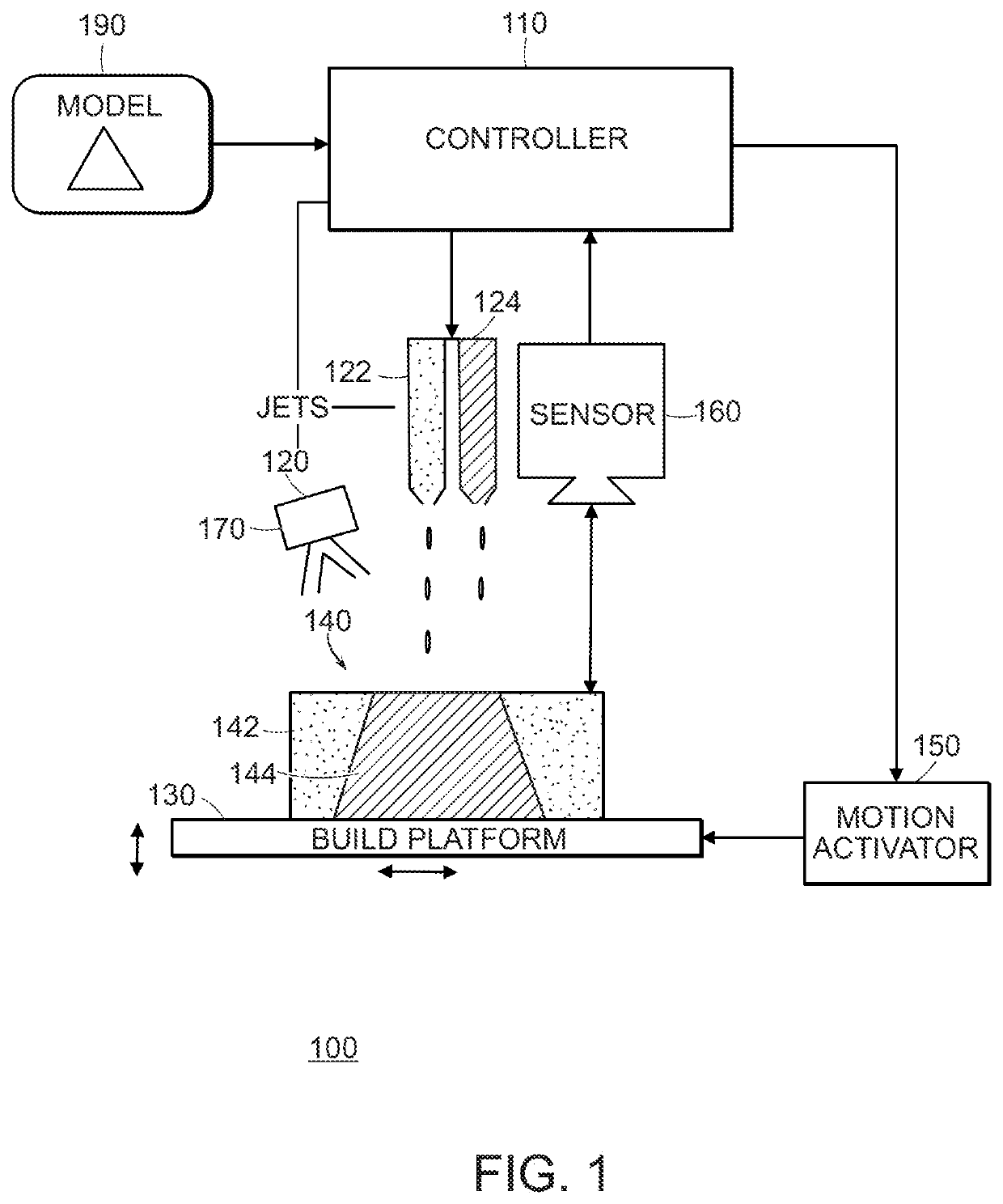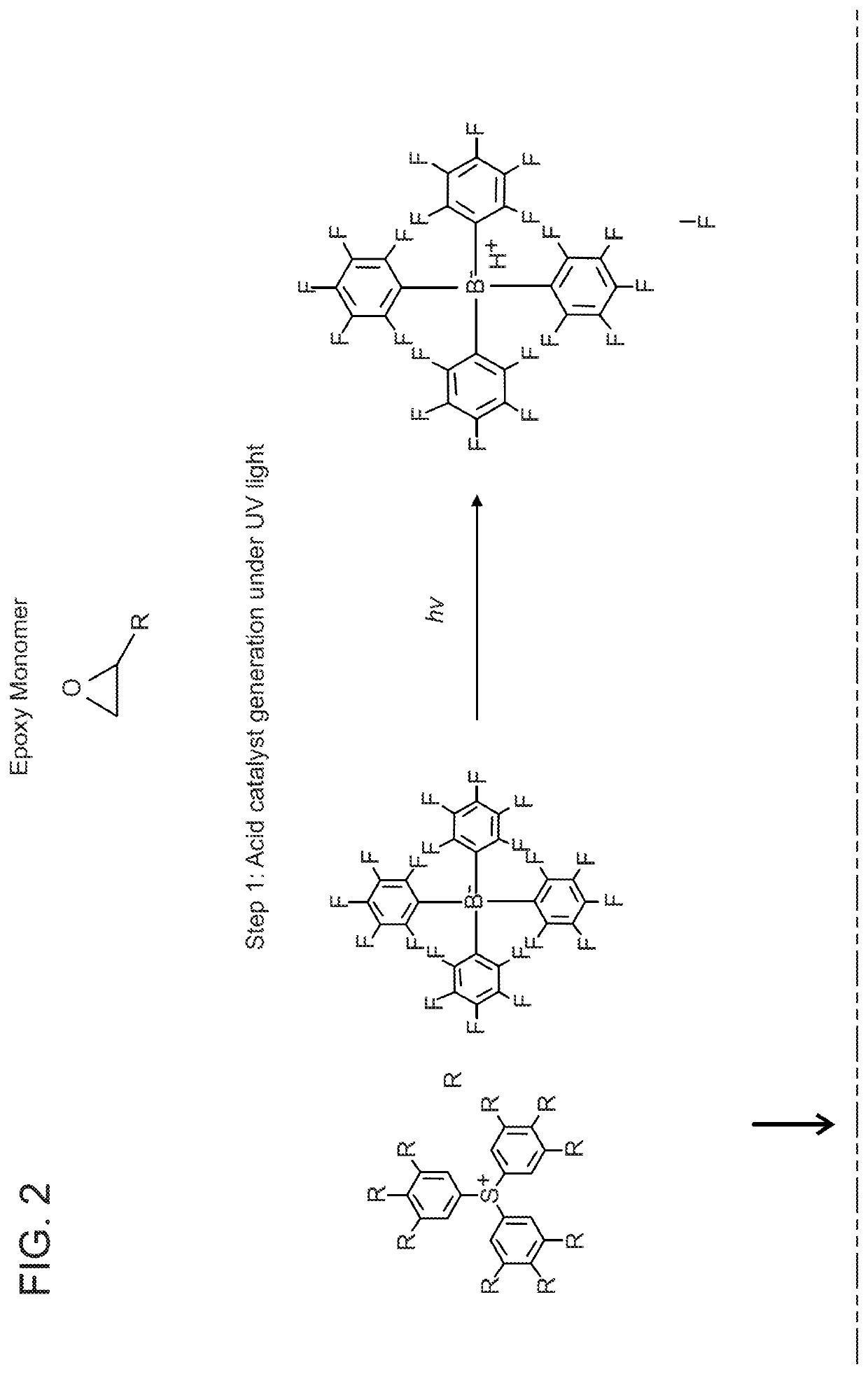Precision system for additive fabrication
a technology of additive fabrication and precision system, which is applied in the direction of manufacturing tools, applying layer means, manufacturing driving means, etc., can solve the problems of inability to planarize the composition is not suitable for additive fabrication use with inkjet printers, and the inability to perform the planarization of the deposited uv curable cationic ink, etc., to achieve the effect of improving the material properties of an accurate obj
- Summary
- Abstract
- Description
- Claims
- Application Information
AI Technical Summary
Benefits of technology
Problems solved by technology
Method used
Image
Examples
Embodiment Construction
[0045]The description below relates additive fabrication, for example using a jetting-based 3D printer 100 shown in FIG. 1. The printer 100 uses jets 120 (inkjets) to emit material for deposition on a partially fabricated objected layers. In the printer illustrated in FIG. 1, the object is fabricated on a build platform, which is controlled to move related to the jets is a raster-like pattern to form successive layers, and in this example also to move relative to the jets to maintain a desired separation of the jets and the surface of the partially-fabricated object. As illustrated, there are multiple jets 122, 124, with one jet 122 being used to emit a support material to form a support structure 142 of the object, and another jet 124 being used to emit built material to form the object 144 itself. For materials for which curing is triggered by an excitation signal, such as an ultraviolet illumination, a curing signal generator 170 (e.g., a UV lamp) triggers curing of the material ...
PUM
| Property | Measurement | Unit |
|---|---|---|
| size | aaaaa | aaaaa |
| temperature | aaaaa | aaaaa |
| surface tension | aaaaa | aaaaa |
Abstract
Description
Claims
Application Information
 Login to View More
Login to View More - R&D
- Intellectual Property
- Life Sciences
- Materials
- Tech Scout
- Unparalleled Data Quality
- Higher Quality Content
- 60% Fewer Hallucinations
Browse by: Latest US Patents, China's latest patents, Technical Efficacy Thesaurus, Application Domain, Technology Topic, Popular Technical Reports.
© 2025 PatSnap. All rights reserved.Legal|Privacy policy|Modern Slavery Act Transparency Statement|Sitemap|About US| Contact US: help@patsnap.com



